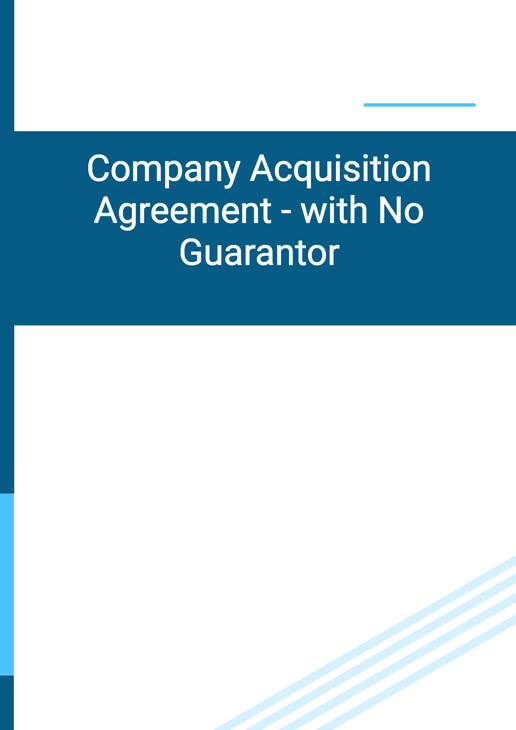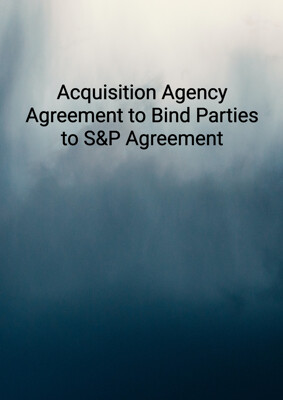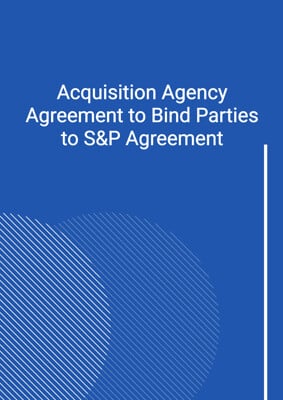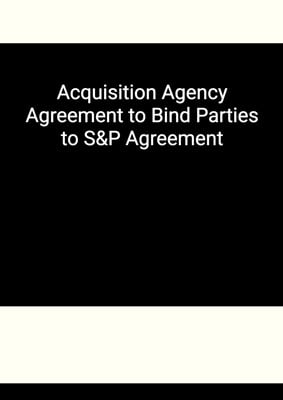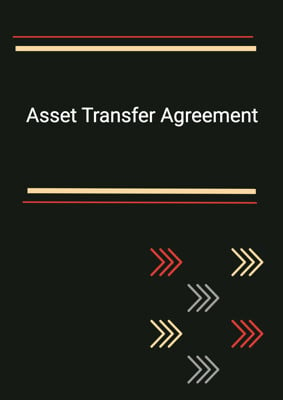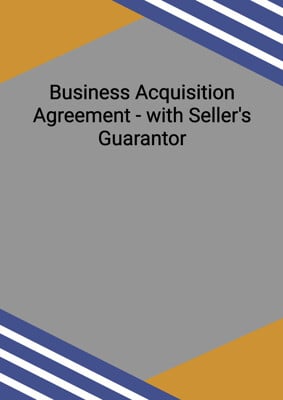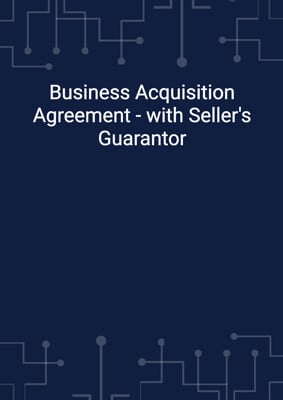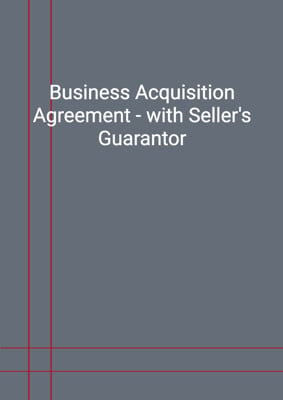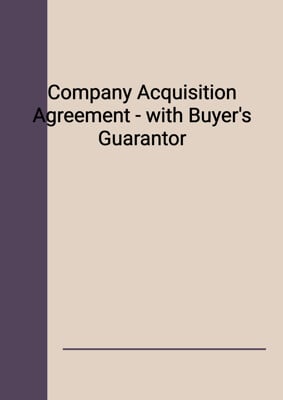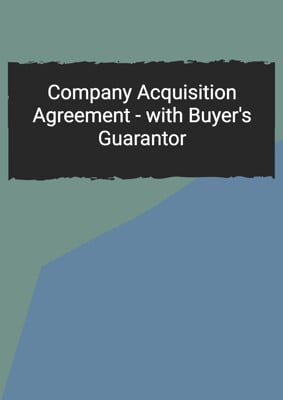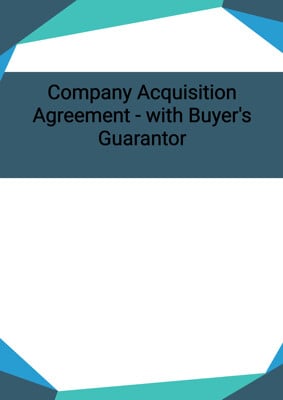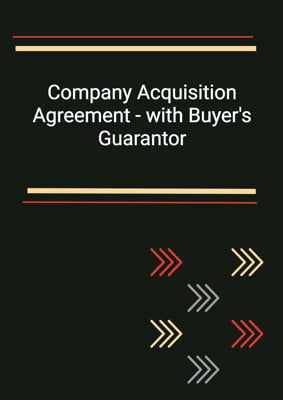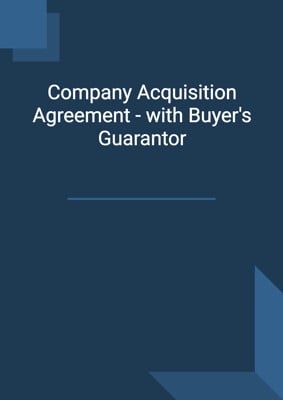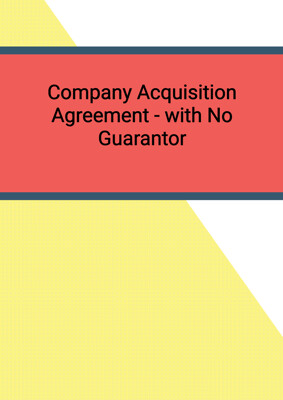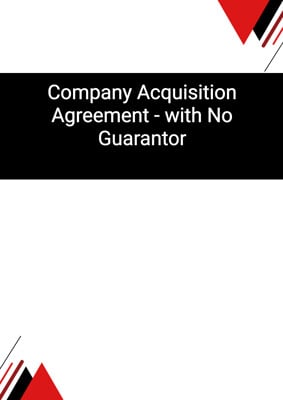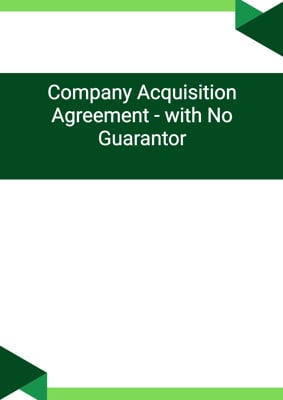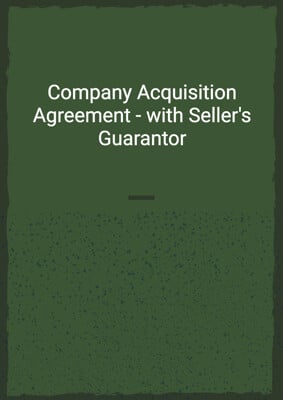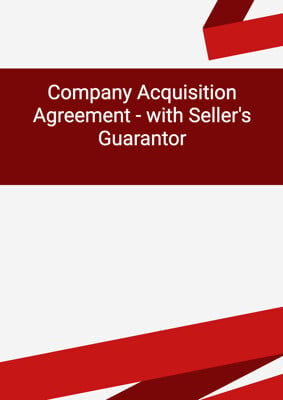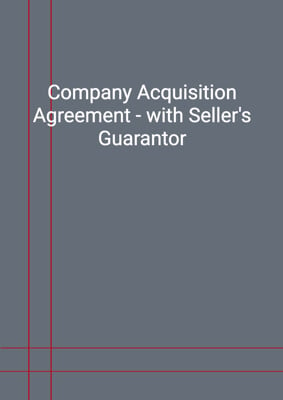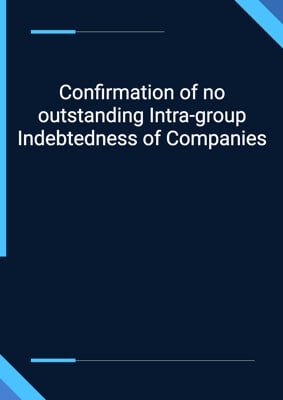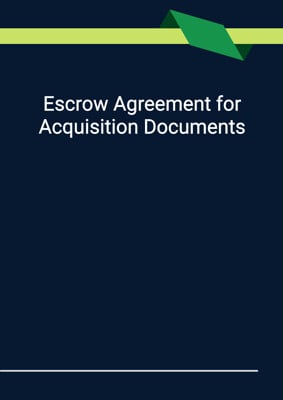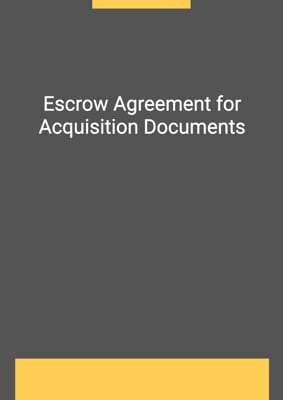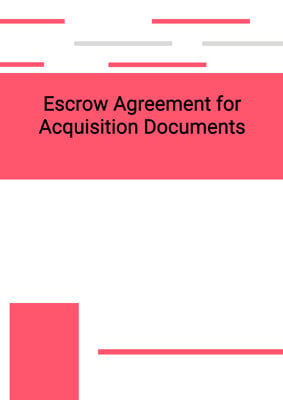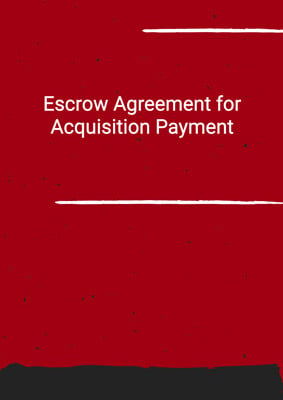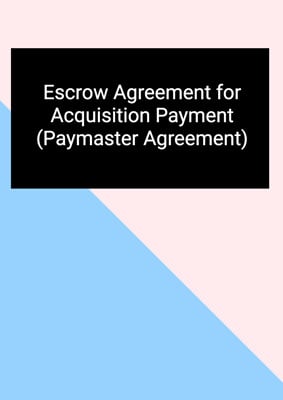How to Tailor the Document for Your Need?
01
Create Document
Fill in the details of the parties. You can click the "Fill with Member’s Information" button to complete it with information saved to your account.
02
Fill Information
Please fill in any additional information by following the step-by-step guide on the left hand side of the preview document and click the "Next" button.
03
Get Document
When you are done, click the "Get Document" button and you can download the document in Word or PDF format.
04
Review Document
Please get all parties to review the document carefully and make any final modifications to ensure that the details are correct before signing the document.
Document Preview
Document Description
The Company Acquisition Agreement - with No Guarantor is a legally binding document that outlines the terms and conditions of the acquisition of a company. It is entered into by the sellers, who are the current owners of the company, and the buyer, who wishes to purchase the company. The agreement highlights the importance of the document by emphasizing its legal significance and the need for both parties to fully understand and agree to its terms.
The entire document is divided into several sections, each addressing a specific aspect of the acquisition. The first section, titled 'Interpretation', provides definitions for key terms used throughout the agreement. This ensures that both parties have a clear understanding of the terminology used.
The second section, titled 'Sale of the Shares and Price', outlines the details of the sale and purchase of the shares of the company. It specifies the number of shares to be sold by each seller and the agreed price to be paid by the buyer. The section also includes provisions for the payment of the price, whether in cash or shares, and any additional amounts that may be payable in certain circumstances.
The third section, titled 'Conditions to Completion', sets out the conditions that must be fulfilled before the sale and purchase can be completed. These conditions include obtaining shareholder approvals, obtaining consents from relevant parties, and fulfilling any outstanding obligations or debts.
The fourth section, titled 'Pre-Completion Undertakings', outlines the obligations of the sellers prior to completion. These obligations include conducting the business in the ordinary course, preserving and protecting the business assets, providing access to books and records, and ensuring compliance with the terms of the agreement.
The fifth section, titled 'Completion', details the process and requirements for completing the sale and purchase. It specifies the location and timing of completion, the delivery of share transfers and other relevant documents, and the payment of the price.
The sixth section, titled 'Completion Accounts', provides guidelines for preparing the completion accounts. These accounts reflect the financial position of the company and its subsidiaries at completion and are prepared in accordance with accounting principles and specific accounting policies outlined in the agreement.
The seventh section, titled 'Post-Completion Undertakings', sets out the obligations of the sellers and the buyer following completion. These obligations include the repayment of any outstanding debts, the change of name of any group company, and the cessation of use of certain trade names or logos.
The eighth section, titled 'Restrictions on the Sellers', imposes restrictions on the sellers for a specified period after completion. These restrictions include non-competition and non-solicitation provisions to protect the buyer's interests.
The ninth section, titled 'Warranties', contains representations and warranties made by the sellers to the buyer. These warranties provide assurances regarding the accuracy of information, the ownership of assets, and the absence of any undisclosed liabilities.
The tenth section, titled 'Limitations on Claims', sets out the limitations on the buyer's claims against the sellers. These limitations include time limits for making claims, thresholds for the aggregate amount of liability, and exceptions for certain types of breaches.
The eleventh section, titled 'Buyer's Rights to Terminate', grants the buyer the right to terminate the agreement in certain circumstances, such as a material breach by the sellers or a breach of warranty.
The twelfth section, titled 'Withholding Tax and Grossing Up', addresses the payment of taxes and the grossing up of amounts to ensure that the sellers receive the full amount due to them.
The thirteenth section, titled 'Entire Agreement', confirms that the agreement and the disclosure letter constitute the entire agreement between the parties and supersede any previous agreements or understandings.
The fourteenth section, titled 'Variation', states that any variations to the agreement must be in writing and signed by all parties.
The fifteenth section, titled 'Assignment', allows for the assignment of rights and obligations under the agreement, subject to certain conditions and limitations.
The sixteenth section, titled 'Announcements', restricts the parties from making any announcements or disclosures without the prior written approval of the other party.
The seventeenth section, titled 'Costs', specifies that each party is responsible for its own costs incurred in relation to the agreement, except for certain specified costs.
The eighteenth section, titled 'Severability', ensures that if any provision of the agreement is held to be invalid or unenforceable, it will not affect the validity or enforceability of the remaining provisions.
The nineteenth section, titled 'No Rights of Third Parties', clarifies that the agreement does not confer any rights on third parties to enforce its terms.
The twentieth section, titled 'Governing Law, Jurisdiction', specifies the governing law and jurisdiction for any disputes arising from the agreement.
The twenty-first section, titled 'Notices and Service', outlines the requirements for giving notices under the agreement, including the methods of service and the addresses for each party.
The twenty-second section, titled 'No Waivers/Buyer's Rights and Remedies', clarifies that no failure or delay by the buyer in exercising its rights or remedies under the agreement shall operate as a waiver or preclude its future exercise.
The twenty-third section, titled 'No Rights of Third Parties', confirms that the agreement does not confer any rights on third parties to enforce its terms.
The twenty-fourth section, titled 'Governing Law, Jurisdiction', specifies the governing law and jurisdiction for any disputes arising from the agreement.
The schedule titled 'Interpretation' provides definitions for key terms used throughout the agreement.
The schedule titled 'The Sellers and the Shares' provides details of the sellers and the shares to be sold, including any consideration shares to be issued by the buyer.
The schedule titled 'Maximum Liability under Warranties and Indemnity' sets out the maximum liability of each seller under the warranties and indemnity provisions of the agreement.
The schedule titled 'The Warranties' contains the representations and warranties made by the sellers to the buyer.
The schedule titled 'The Pension Scheme' provides details of the pension scheme of the company, if applicable.
The schedule titled 'Completion Accounts' provides guidelines for preparing the completion accounts, including the general requirements, accounting policies, accounting methods, and reports to be included.
The schedule titled 'Articles of Association' contains the articles of association of the company, if applicable.
How to use this document?
1. Obtain legal advice: Before using the Company Acquisition Agreement - with No Guarantor, it is important to consult with a legal professional who can provide guidance and ensure that the agreement meets your specific needs and complies with applicable laws.
2. Understand the terms: Familiarize yourself with the terms and conditions outlined in the agreement, including the sale and purchase details, conditions to completion, pre-completion undertakings, completion requirements, and post-completion obligations.
3. Gather necessary information: Collect all relevant information, including the names and addresses of the sellers and the buyer, details of the shares to be sold, and any specific considerations for the sale price.
4. Prepare completion accounts: If applicable, follow the guidelines provided in the agreement to prepare the completion accounts, ensuring compliance with accounting principles and specific accounting policies.
5. Comply with pre-completion undertakings: Before completion, ensure that the sellers fulfill their obligations, such as conducting the business in the ordinary course, preserving and protecting the business assets, and providing access to books and records.
6. Complete the sale and purchase: Arrange for the necessary documents, such as share transfers and certificates, to be delivered to the buyer on completion. Ensure that the agreed price is paid in accordance with the provisions of the agreement.
7. Fulfill post-completion undertakings: After completion, comply with any post-completion obligations, such as repayment of debts, change of company names, and cessation of use of certain trade names or logos.
8. Monitor limitations on claims: Be aware of the limitations on the buyer's claims against the sellers, including time limits, liability thresholds, and exceptions for certain types of breaches.
9. Seek professional advice for disputes: In case of any disputes or disagreements arising from the agreement, consult with a legal professional to understand your rights and options for resolution.
10. Keep records: Maintain accurate records of all communications, documents, and transactions related to the acquisition agreement for future reference and compliance purposes.
Not the right document?
Don’t worry, we have thousands of documents for you to choose from:
